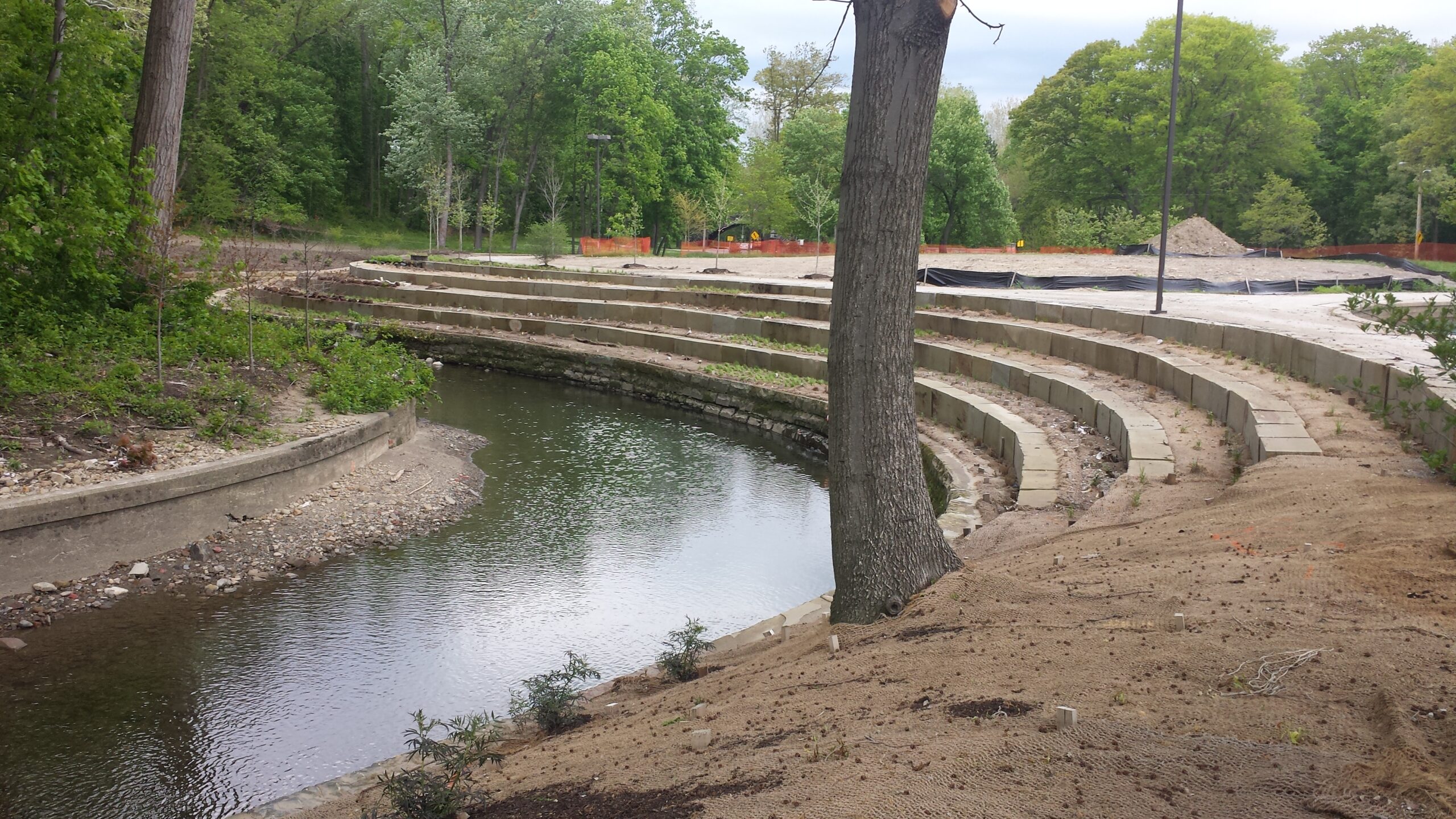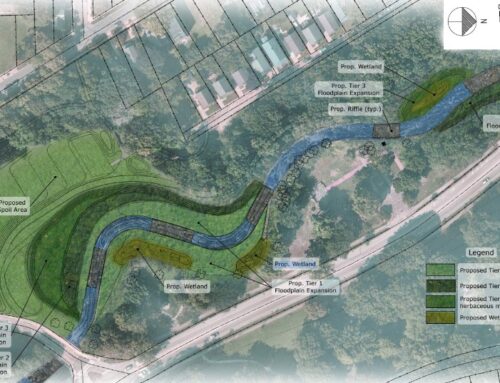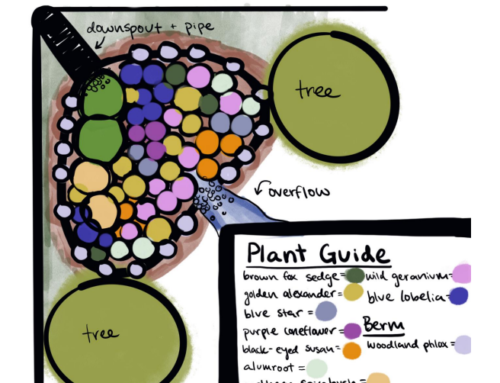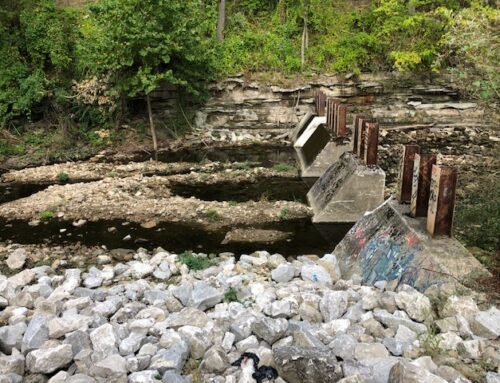[et_pb_section fb_built=”1″ admin_label=”section” _builder_version=”3.22″][et_pb_row admin_label=”row” _builder_version=”3.25″ background_size=”initial” background_position=”top_left” background_repeat=”repeat”][et_pb_column type=”4_4″ _builder_version=”3.25″ custom_padding=”|||” custom_padding__hover=”|||”][et_pb_text admin_label=”Text” _builder_version=”4.8.2″ background_size=”initial” background_position=”top_left” background_repeat=”repeat” hover_enabled=”0″ sticky_enabled=”0″]
The Doan Brook Watershed Partnership is working with the Northeast Ohio Regional Sewer District (NEORSD) to enhance and restore portions of the lower Doan Brook in Rockefeller Park, between East 105th Street at Martin Luther King Jr. Boulevard and Wade Park Avenue.
Required by the Ohio Environmental Protection Agency (EPA) and the U.S. Army Corps of Engineers (USACE), the Doan Brook Stream Enhancement Project will mitigate impacts to Abram Creek from the Cleveland Hopkins International Airport expansion project. The Sewer District has a long term interest in the ecological restoration of Doan Brook and is this project’s manager for design and implementation.
In late 2010, the District hired a consultant team to design the project. As stream restoration is a relatively new science, this team and the District worked together to design 30%, or the general outline of the hydrologic and habitat features. The remaining 60% of the design will be completed by Sewer District staff, with input from stakeholders. Because this project involves the use of federal funds, through the Federal Aviation Administration (FAA), and potentially impacts historic properties (e.g., Rockefeller Park), Section 106 of the National Historic Preservation Act (NHPA) applies. The District has retained the services of Mannik & Smith for the Section 106 Consultation Process and Stakeholder Involvement for the project.
A second stakeholder meeting was held on May 24, 2011 to review the conceptual stream restoration design. At this meeting, the District detailed plans to focus the current enhancement project on the section of stream from E. 105th to the crossing under MLK near the lagoon.
Throughout the design process, NEORSD has been evaluating the size and shape of the stream channel to ensure a stable stream channel is created at the end of the project. A stable stream channel will reduce the amount of erosion along the stream banks, provide a low flow channel so water does not stagnate during dry months, and allow areas where the stream can safely access a floodplain. To create a stable stream channel, the design will address existing stream bank erosion, failing and deteriorating walls, and creation of stream features called pools and riffles that provide stability and habitat for aquatic bugs and fish — thus improving the ecology and life of this stream.
Construction will begin in the late spring of 2013 and is anticipated to be completed by end of that year. Visit the NEORSD website for further information. Check the DBWP Facebook page and calendar of events often to learn more about stakeholder involvement. Alternatively, feel free to call the Partnership with questions, concerns or ideas.
[/et_pb_text][/et_pb_column][/et_pb_row][/et_pb_section]






Leave A Comment